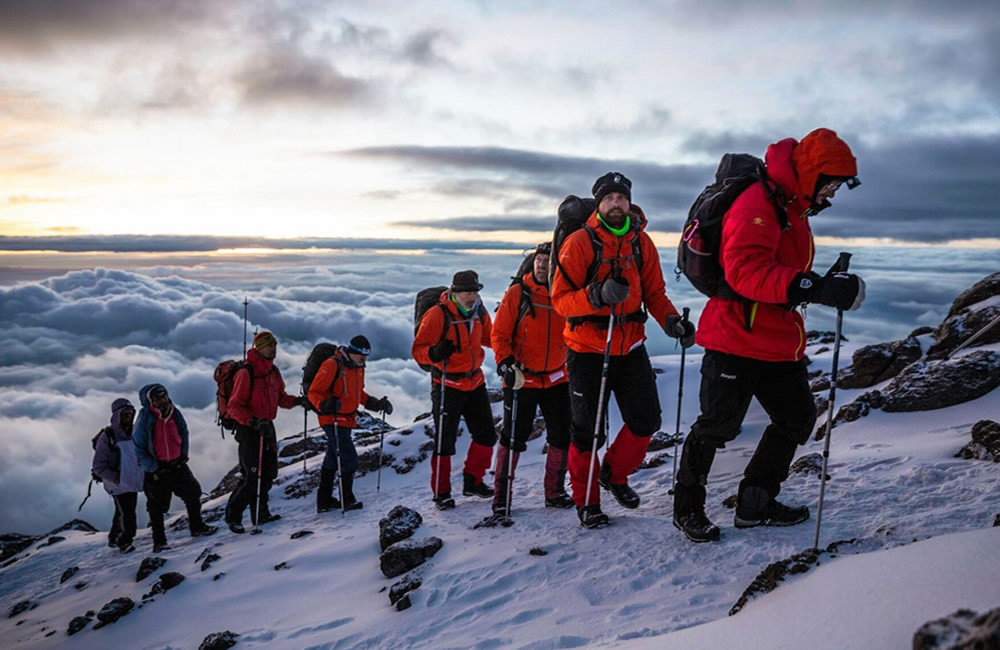Climbing Mount Kilimanjaro is no ordinary trek — it’s a test of endurance, altitude tolerance, and mental strength. Standing tall at 5,895 meters (19,341 feet), Kilimanjaro is one of the world’s most iconic trekking adventures. But don’t be fooled by its accessibility; you still need to train.
In this comprehensive fitness guide, we’ll walk you through how to train for Kilimanjaro trekking, improve your physical readiness, and boost your chances of a successful summit — with a smile.
Why Training Matters for Kilimanjaro
Unlike technical climbs that require ropes and ice axes, Kilimanjaro is a non-technical trek, which means no mountaineering experience is required. However, that doesn’t mean it’s easy.
The main challenges are:
- Altitude sickness
- Long hiking days (5–10 hours)
- Variable terrain – from jungle paths to scree slopes
- Cold temperatures at high altitudes
A good training plan helps your body handle physical stress, improves your endurance, and increases your resistance to fatigue. More importantly, it prepares your mind, which is just as important on summit night.
When to Start Training
Start training at least 8–12 weeks before your climb. If you’re new to hiking or not currently active, aim for a longer preparation window — ideally 3–6 months ahead.
Gradual progression is key. Overtraining can lead to injuries, while under-training increases the risk of fatigue and altitude failure.
Weekly Kilimanjaro Training Plan
Here’s a sample weekly workout structure tailored for Kilimanjaro:
| Day | Activity |
| Monday | Rest or light stretching |
| Tuesday | Cardiovascular training (e.g., 45 min brisk walk, jog, or cycling) |
| Wednesday | Strength training (focus on legs & core) |
| Thursday | Moderate hike or stair climbing (with backpack) |
| Friday | Rest |
| Saturday | Long hike (start with 2 hours, build to 6–8 hours) |
| Sunday | Yoga, light cardio, or cross-training |
Cardio Training: Build Your Stamina
Cardiovascular endurance is your foundation for summit success. You’ll be hiking at high altitudes for 6–10 hours per day, often over consecutive days.
Best cardio workouts for Kilimanjaro:
- Hiking with a weighted backpack
- Jogging or trail running
- Stair climbing (add a pack to simulate trekking)
- Cycling or elliptical workouts
Tip: Train at a steady pace, not sprinting. Kilimanjaro is a marathon, not a race.
Strength Training: Strengthen Your Legs & Core
Your legs are your engines, and your core is your stabilizer. A strong body helps you power through uneven terrain and long hours on your feet.
Focus areas:
- Legs: Squats, lunges, step-ups, calf raises
- Core: Planks, mountain climbers, leg lifts
- Back and shoulders: Rows and shoulder presses (for backpack support)
Aim for 2 strength sessions per week. Use light to moderate weights and high reps for endurance.
Flexibility & Mobility: Prevent Injuries
Don’t overlook flexibility. Stretching improves range of motion, reduces soreness, and helps prevent injuries.
Incorporate:
- Yoga: Great for flexibility and breathing control
- Dynamic warm-ups before workouts
- Static stretching after hikes and strength sessions
Altitude Simulation & Acclimatization
Altitude is the biggest unknown. While you can’t perfectly simulate high altitude at home, you can prepare your body to adapt better.
Here’s how:
- Do longer hikes at elevation if possible (2,000m+)
- Add breath-control training (try altitude masks or yoga breathing)
- Choose a longer Kilimanjaro route (7+ days) for better acclimatization
Practice Hikes with Gear
Train with the backpack, boots, and gear you’ll use on the mountain. This helps prevent blisters, chafing, and muscle strain.
Practice hikes should:
- Mimic mountain terrain (uneven trails, inclines)
- Include elevation gain (500–1,000m/day)
- Build from 2-hour hikes to full-day treks
Mental Preparation: Summit Success Starts in Your Mind
Altitude fatigue can wear down even the fittest trekkers. Mental strength is crucial, especially during summit night, where you’ll hike in the dark, cold, and wind.
Mental training tips:
- Practice meditation or mindfulness
- Visualize yourself reaching the summit
- Break each day into small goals: “Just make it to the next checkpoint.”
Nutrition & Hydration Tips for Training
Fueling your training is as important as the workouts themselves.
- Eat clean: Emphasize lean proteins, whole grains, fruits, and veggies.
- Hydrate well: Practice drinking 3–4 liters of water daily.
- On the trail: Train with the snacks and meals you’ll eat while trekking (nuts, energy bars, dried fruit).
Gear Checklist for Training
- Hiking boots (well broken-in)
- Daypack (with hydration system)
- Trekking poles
- Layered clothing (for various temperatures)
- Headlamp (for early hikes or summit simulation)
- Heart rate monitor or fitness tracker (optional)
Kilimanjaro is a big step forward for both your body and your mind. Even if you’re not an elite athlete, getting ready for the climb greatly improves your chances of reaching the top and makes the trip more enjoyable.
Your three keys to success:
- Build endurance gradually.
- Focus on functional strength.
- Stay consistent and committed.
And remember — it’s not just about reaching the summit, but enjoying every step of the climb.
